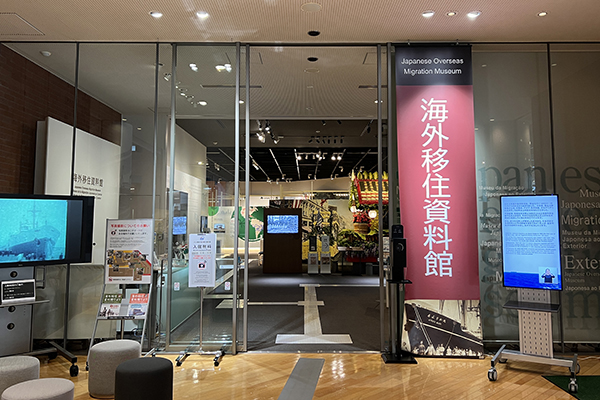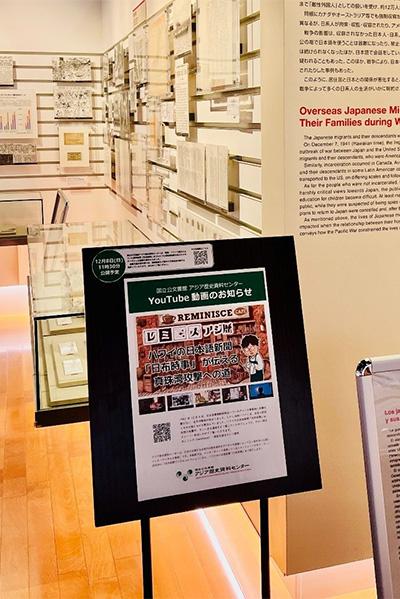JACAR Newsletter
JACAR Newsletter Number 45
December 26, 2024
Introduction of New Contents
Now on YouTube: “Reminisce - JACAR: How the Nippu Jiji, a Japanese-language newspaper in Hawaii, traced the path to Pearl Harbor”
The Japan Center for Asian Historical Records, in a collaborative arrangement with the Hoover Institution at Stanford University, has been working to expand its links to the Hoover Institution’s Hoji Shinbun Digital Collection (a digital collection of Japanese-language newspapers).
The ongoing effort has recently made substantial progress by offering access to Hawaiian Japanese-language newspapers like the Nippu Jiji (see Newsletter Number 44. To highlight the materials now available, JACAR has created a unique video— “Reminisce – JACAR: How the Nippu Jiji, a Japanese-language newspaper in Hawaii, traced the path to Pearl Harbor”—and shared it on YouTube.
 Pleas click on the image to watch the video
Pleas click on the image to watch the video
On December 8, 1941, the Japanese Navy’s “Mobile Force” (an aircraft carrier group) attacked the US naval base at Pearl Harbor in Hawaii, triggering the Pacific War. Hawaii was then home to a significant population of Japanese immigrants and their descendants. With its readership of Japanese speakers and its location in Hawaii, the Nippu Jiji operated from a unique perspective in reporting on the jolting surprise attack and the events that led up to it. JACAR’s new video explores that dynamic, utilizing a narrative approach.
The Nippu Jiji was a Japanese-language newspaper with an extensive readership among Japanese immigrants in Hawaii.
Originally known as the Yamato (1895–96) and later the Yamato Shimbun (1896–1906), the paper was purchased by Sōga Yasutarō in 1905 and renamed the Nippu Jiji in 1906. Several years later, in 1919, the publication added an English section.
Following the 1941 attack on Pearl Harbor, Sōga Yasutarō was arrested and taken into custody, and his son Shigeo was appointed the Nippu Jiji’s new president and managing editor. After suspending operations on December 11, the newspaper resumed publication under censorship restrictions on January 8, 1942, and went on to adopt a new name, the Hawaii Times (1942–85), on November 2.
The JICA Yokohama – Japanese Overseas Immigration Museum has also kindly set up a panel with a QR code linking to the JACAR video.
The JICA Yokohama – Japanese Overseas Immigration Museum aims to broaden and deepen public awareness and understanding of the history of Japanese emigration, the migrants, and their Nikkei descendants. Visitors have the opportunity to explore a wide variety of resources on overseas immigration, ranging from historical photos to displays of actual farm equipment that migrants used.
If the JACAR video sparks your curiosity about the history of the Nikkei people and their communities, a visit to the Museum would be a wonderful way to pursue that interest. (Before you go, we encourage you to check with the Museum for their open days and hours.)
The Japanese Overseas Immigration Museum, operated by the Japan International Cooperation Agency (JICA)
https://www.jica.go.jp/domestic/jomm/index.html
Japan Center for Asian Historical Records
New content on the Learning About Asian History: Using Digital Records to Learn About Japan and Asia platform
The Japan Center for Asian Historical Records launched its Learning About Asian History: Using Digital Records to Learn About Japan and Asia platform in 2020 to align with changes in Japan’s curriculum guidelines and a growing interest in active learning and refresher courses. Now in its fifth year, the platform continues to grow, having recently made a substantial addition of new content to better benefit users.
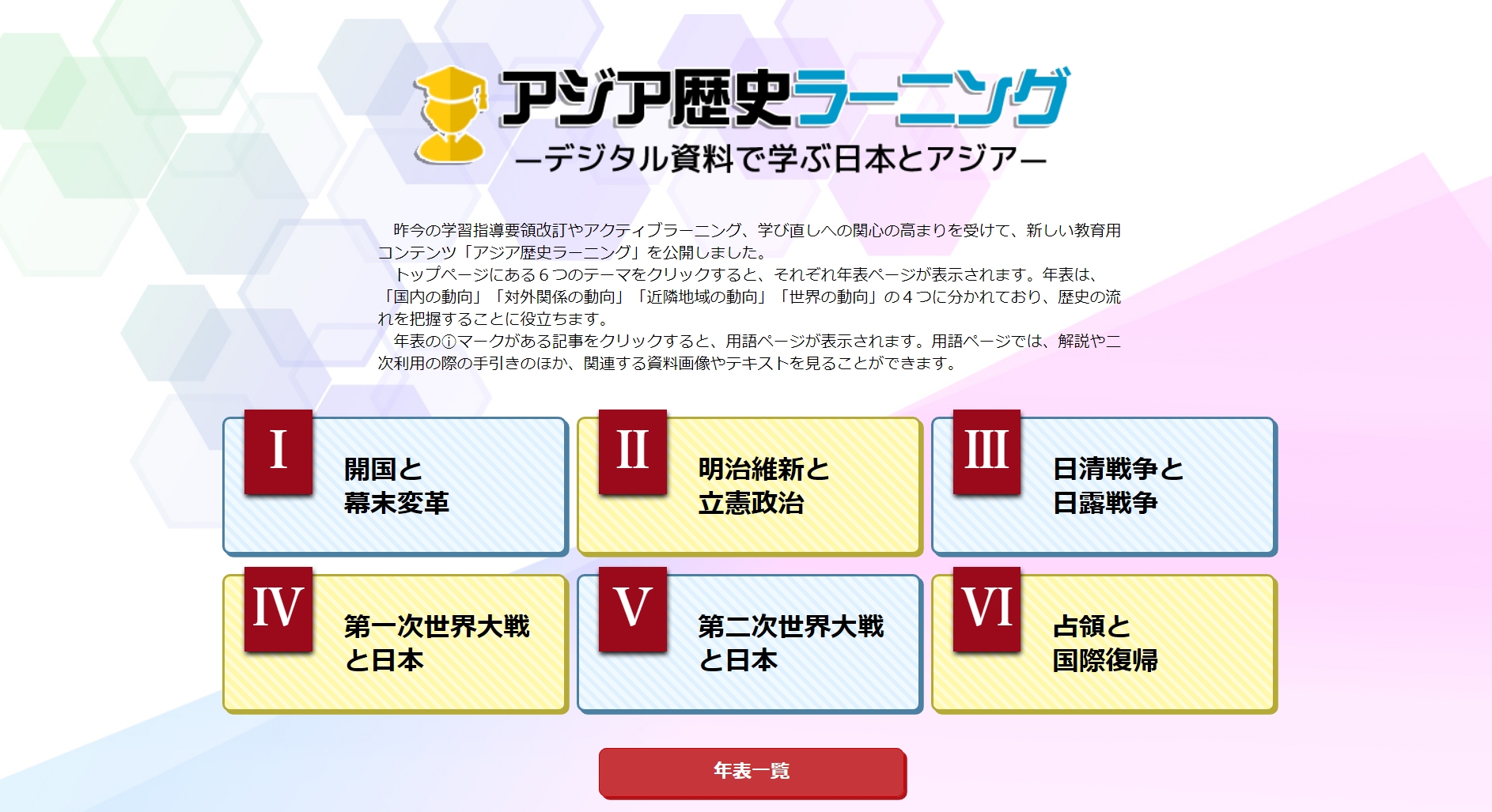 Image 1: Home page
Image 1: Home page
The latest expansion, which took place over the last few months (September–November 2024), focused on adding explanations and document images relating to a total of 21 terms across a broad topical range. Examples include the Opium War, where the Qing and Britain battled over regulations on opium trade; other events in the area around Japan; the Tripartite Pact, signed during World War II; and occupation-era items like the Basic Act on Education, which the government formulated to lay the foundation for educational systems and policies in postwar Japan. (For details on the additions, see the News Releases for September 13, September 30, October 18, and November 8.)
The new additions offer a wealth of engaging, eye-opening content.
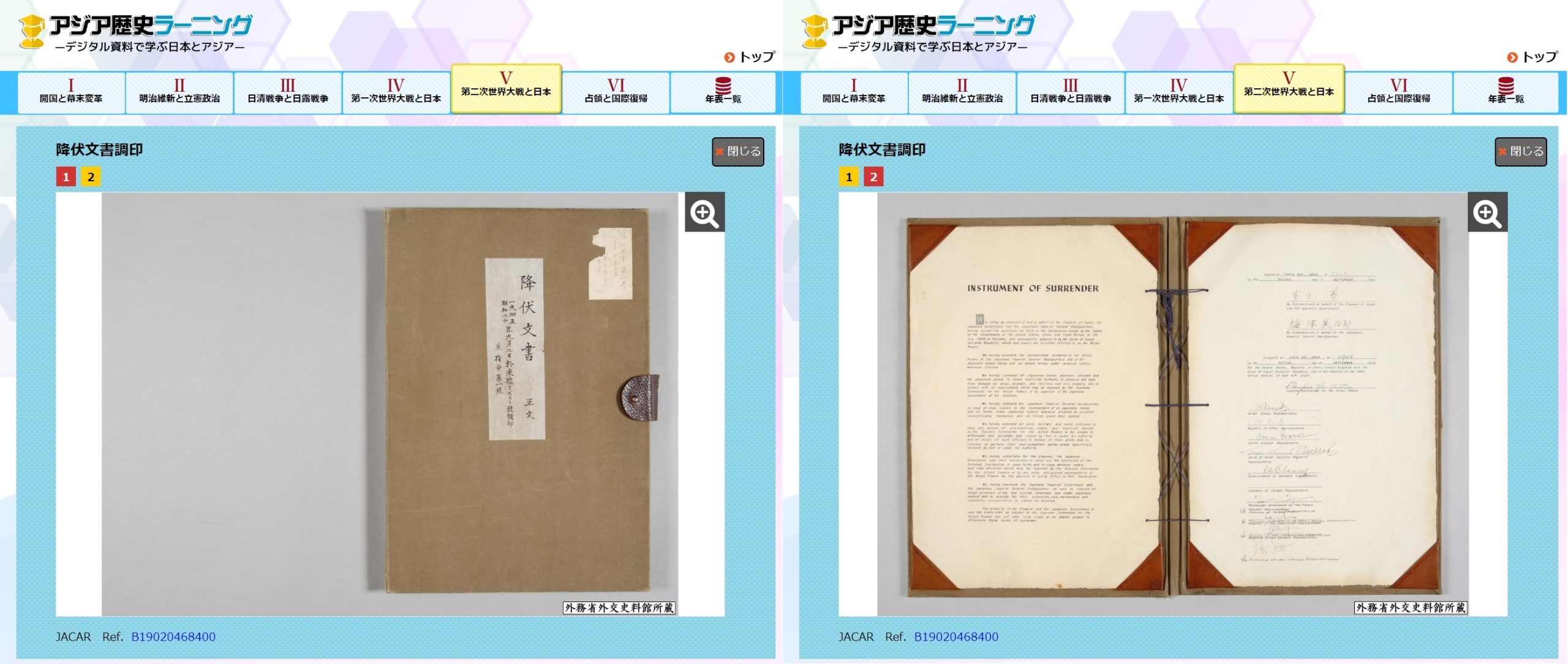
Image 2-I: “The signing the Instrument of Surrender” (View Images page)
Image 2-II: “The signing the Instrument of Surrender” (View Images page)
The entry for the signing of the Instrument of Surrender that ended World War II is one example. Now, users can view the document, signed aboard the USS Missouri on September 2, 1945, in full color.
Another example is the entry for the Boxer Incident, which now features an explanation of how the pro-Qing, anti-foreign Boxer movement escalated into a war between eight countries (including Japan) and the Qing. The entry also includes a revealing look at a report from Nishi Tokujirō, Japan’s minister in Beijing during the rebellion.
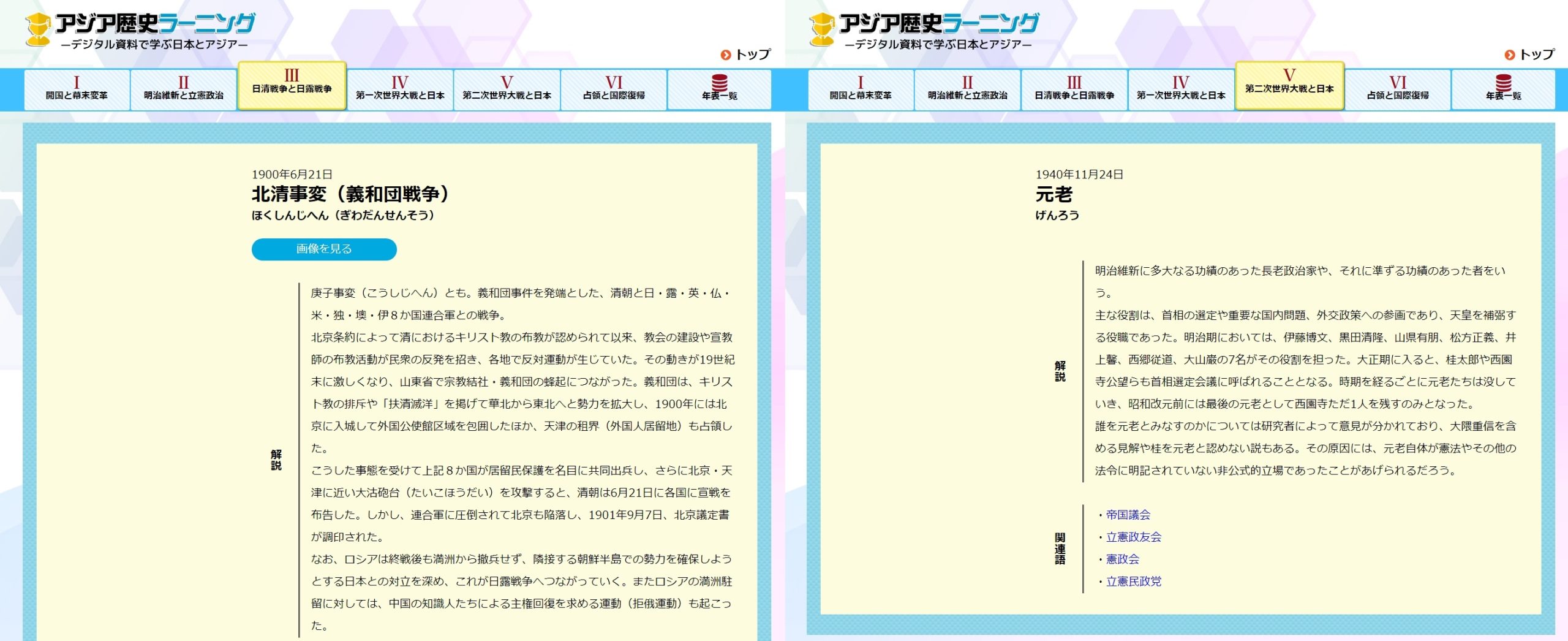
Image 3: “Boxer Incident” (Explanation page)
Image 4: “Genrō” (Explanation page)
Other additions include explanatory content on the Genrō, who held enormous sway in steering the course for Japan from the second half of the Meiji period into the Taisho period, and the February 26 Incident, an event that would help shape the fate of prewar Japan.
The Learning About Asian History platform divides roughly a century of history (from the mid-nineteenth century to the mid-twentieth century) into six sections, each of which has a Chronology page that offers a composite timeline of events occurring in Japan and overseas. On the Chronology pages, users can click on entries marked with the “ⓘ” symbol to bring up explanatory content, document images, and terms relating to the item in question.
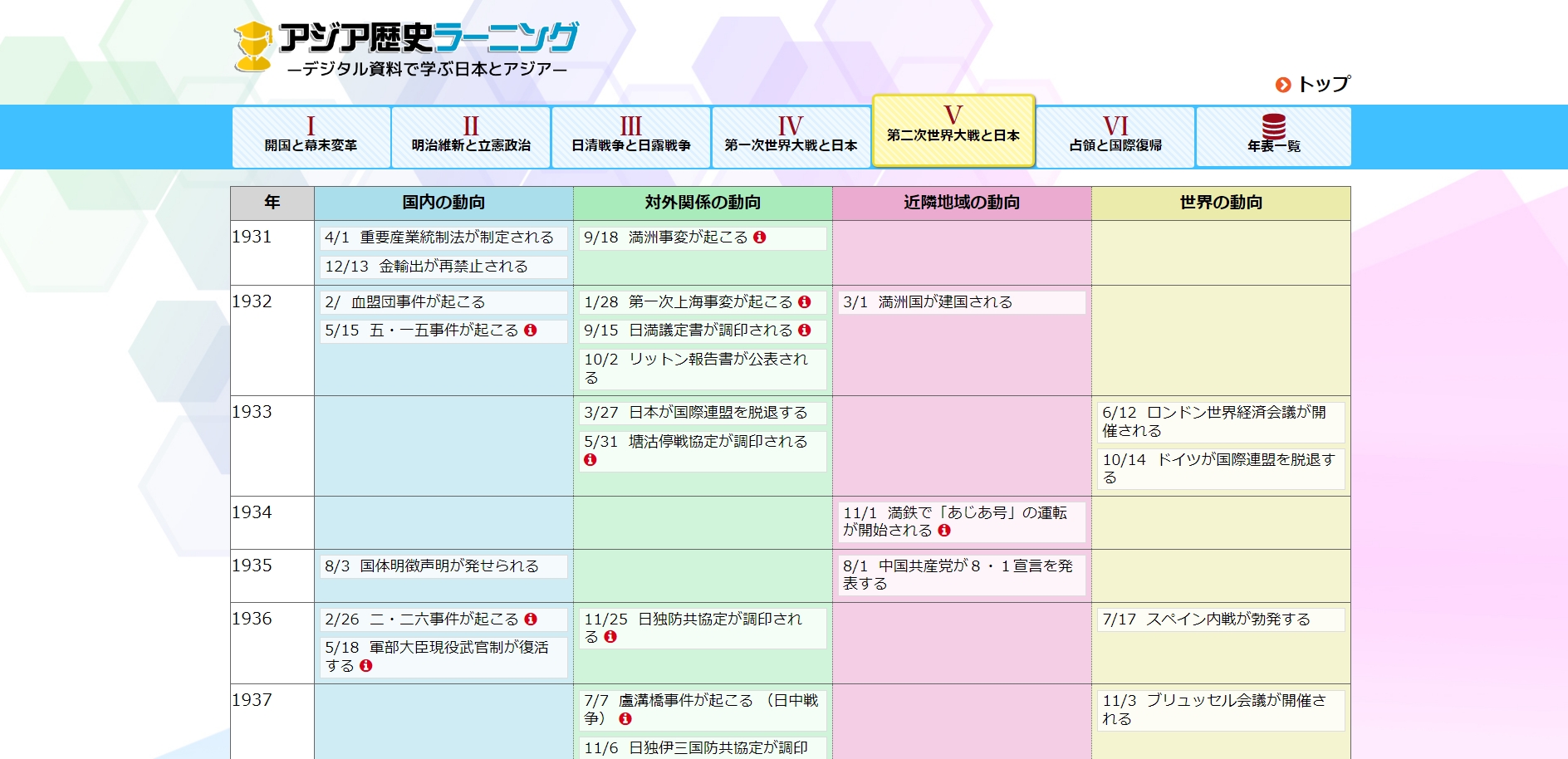
Image 5: World War II and Japan (Chronology page)
The Japan Center for Asian Historical Records will continue to provide content that sparks curiosity and helps users enhance their learning. We hope you take advantage of what we have to offer.
Japan Center for Asian Historical Records



